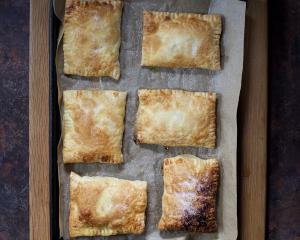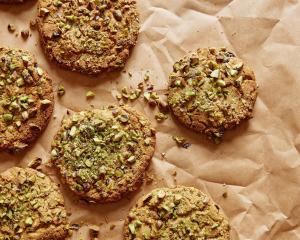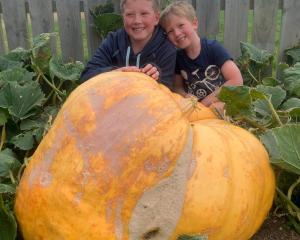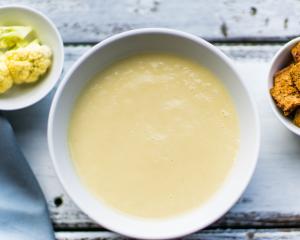The first mention of a British recipe for "Christmas cake" was Mrs Beeton's of 1861, according to Prof Helen Leach, one of the authors of The Twelve Cakes of Christmas, a book on the development of Christmas cake recipes in New Zealand. It includes recipes for 12 types of Christmas cake updated for modern cooks by her sister, Mary Browne.
The year 1861 seems surprisingly late for something we regard as an age-old Christmas tradition, but many of our Christmas traditions, including the Christmas cake, developed in the 19th century.
Earlier, boiled Christmas puddings, made with suet, fruit and flour, were served on Christmas Day, but not Christmas cakes.
However, other types of festive cakes have been around for a long time. Prof Leach thinks festive cakes which are found all round Europe probably have their origins in cakes made for the Roman festival of Saturnalia, which was celebrated at this time of year.
By the 17th century, large, decorated twelfth cakes were served on Twelfth Night (January 6) amid revelry with a king, queen and other characters. These were fruited breads raised with yeast but did not keep well.
"There are certainly fruit cakes and twelfth cakes before [Mrs Beeton's], but nothing was called Christmas cake in England until she called a recipe Christmas cake, and it was a strange recipe - a gingerbread with raisins from America and she'd copied it out and changed its name. [Americans] had fruitcakes and Yule logs, but mostly they concentrated on big wedding cakes, what they called black cakes and bride cakes," she said.
Rich fruit cakes, raised with creamed butter and separately beaten egg yolks and egg whites, developed in the 18th century. By the early 19th century, the pound cake - a cake requiring equal weights (usually a pound or 450g) each of butter, flour, eggs and sugar, was a common type of recipe for a rich cake, including rich fruitcakes.
Recipes change over time as cooks develop easier mixing methods or healthier versions or add new ingredients like essences or baking powder. When baking powder became available, it was quickly adopted for raising cakes instead of laboriously beating eggs and butter. Evolution of recipes is natural and normal, but despite the changes, a recipe can still have an old lineage which can, in many cases, be traced, she says.
Using a research method developed for their earlier book, The Pavlova Story (2008), Prof Leach and her fellow researcher, Raelene Inglis, collected more than 800 recipes entitled Christmas cake or presented as a cake for that time of year. Analysing the ingredients and method in each recipe, they found 12 types, although the two earliest were not actually called "Christmas" cake.
Several American recipes for rich fruitcakes were appropriated by New Zealand cooks and people like Emmeline, who edited the Ladies' Page in the Otago Witness. She sometimes published recipes only six or seven weeks after they appeared in the US, Prof Leach said.
"There was huge receptivity to American recipes, so it's not surprising that their most fancy fruitcakes appealed to New Zealand cooks. When they needed something for Christmas they simply took these recipes and renamed them."
In 1900, two Christchurch cooking teachers, Alice Harman and Elizabeth Gard'ner, published The New Zealand Domestic Cookery Book with a recipe for Christmas cake or bride cake whose lineage Prof Leach has traced back to a recipe for plum cake published in 1832 in Dayton, Ohio, in the US, although she suspects they both came from an as yet undiscovered source.
Several versions were subsequently published here, including one in a Waitaki Girls' High School fundraising cookbook in 1988. It is a type of pound cake with extra fruit, and characterised by the unusual method of soaking spices in wine or brandy.
Pineapple cake became a popular type of Christmas cake in the mid-20th century. Prof Leach thought it might have originated with canned pineapple producers, but found the original recipe came from an American cooking oil manufacturer in the late 1920s and used glace pineapple. The Australians took the recipe, substituted butter for the oil and added more pineapple and it was published in the Australian Women's Weekly in 1934.
"Aunt Daisy copied this recipe almost word for word, including a comment at the end about its good size and keeping qualities but she missed out 1 cups of chopped pineapple. It was published in other places and nobody noticed! People care more about accuracy now," Prof Leach said.
Another recipe originating in the US was a cake containing sweetened condensed milk which she and Inglis found in a booklet put out by an American mincemeat manufacturer in the 1950s. Being quick and easy to make, it found a following in New Zealand after it was published in the New Zealand Woman's Weekly in 1968.
Soon after, other versions including some with fewer eggs or less butter appeared under the label "Christmas cake".
Prof Leach thinks New Zealanders were probably more influenced by American and Australian recipes rather than British ones because British cooks had to cope with harder economic circumstances in the mid-20th century.
"They had a really serious problem at the end of the First World War. We had a slight spillover from it, but didn't get full-scale rationing. The British took a long time to recover, which you can see from the newspapers, and then they go into a depression and they are just getting out of that when they go into another war.
"That had a blighting effect on British cookery which was still apparent in the 1950s. It's not really until the 1960s that things started to improve."
A popular Christmas cake which appeared in the 1960s and '70s and is still often made, was the brazil nut, jewel or cathedral window cake which included a greater variety of fruit and nuts than earlier cakes, held together with eggs and sugar and a small amount of flour. Its named derives from the colourful candied fruit in the mix and often also decorating the top.
Other variants among the 12 types the authors identified included one made with blackcurrant jam, one made with ginger ale that originated in Australia, a modern healthy one without butter developed by Otago Daily Times food columnist Joan Bishop, and an economical wartime one in which a cooked milk and egg custard is mixed into the dry ingredients.
"We picked up that, in the Depression, people tried to carry on as normal, but in the war they overtly adjusted all their recipes and made a big thing of the fact they could do a Christmas cake with no butter or eggs or whatever," Prof Leach said.
One of the changes they noticed in recipes over the years was an increasing amount of fruit.
"Whereas we used to be very fussy about fruit sinking, now of course it can't sink because it's held up by other fruit so we don't have to worry about having dry, floured fruit. We can boil the fruit or soak it overnight.
"It's revolutionised mixing, but only at the cost of a very heavy and dense cake. If times changed and we decide we want lighter cakes, then I'm not sure that many of our current recipes would do," she said.
900g bread flour
450g currants
450g sultanas
450g raisins
120g peel
120g almonds, chopped
450g butter
450g sugar
10 eggs (size 6)
2 tsp baking powder
1/4 cup brandy
Prepare a 26-27cm diameter round pan or a 22-23cm square pan by lining with a double layer of brown paper and a single layer of baking paper. Preheat the oven to 140degC with a shelf in the middle or slightly below.
Weigh the flour. Combine the dried fruit and almonds in an extra-large bowl or preserving pan. Sprinkle 2 tablespoons of the weighed flour over the fruit and mix through, breaking up any lumps of fruit.
Soften the butter in a large bowl and cream with the sugar until light-coloured and fluffy. Add the eggs one at a time, beating well between each addition. If necessary, add a few spoonfuls of the weighed flour to help prevent curdling.
Sift the weighed flour with the baking powder. Fold gradually into the creamed butter mixture. Spoon into the fruit along with the brandy. Fold gently until thoroughly mixed.
Spoon evenly into the prepared cake pan. Smooth the surface with a wet hand. Bake for 4-4 1/2 hours. Leave in the pan until cool. Turn out on to a rack or tray. Remove brown paper and baking paper before wrapping in greaseproof paper. Store in an airtight cake container or wrap in foil.
Adapted from "Christmas cake 2", in Edmonds Cookery Book (Deluxe Edition 14th printing 1974).
The Cookbook (2000). This recipe was an updated and metricated version of a popular Christmas cake of the early 1970s.
Mary revised it from a handwritten version found in a coverless cookbook from Oamaru to satisfy the many requests for the recipe from family and friends who appreciated the "quick mix" method and the cake's excellent flavour and moist texture.
Mary's youngest daughter makes at least three before Christmas each year because her husband loves rich fruitcakes. The cakes disappear before the official celebrations.
125g butter
2 Tbsp golden syrup
1 x 400g can sweetened condensed milk
4 eggs
1/2 tsp vanilla essence
1/2 tsp lemon essence
1/2 tsp almond essence
1.2kg mixed dried fruit
1/4 cup rum, sherry or port, plus extra 2 Tbsp to pour over cake when cooked
1/2 tsp baking soda
1/4 cup milk
350g bread flour
Line the base and sides of a 20cm square or 22cm round cake pan with a layer of brown paper followed by a layer of non-stick baking paper. Preheat the oven to 130degC with a shelf in the middle or just below.
Choose a large-enough saucepan to hold all the ingredients for the final mixing. In it, melt the butter, golden syrup and sweetened condensed milk over gentle heat, stirring constantly until the butter has melted. Remove from the heat.
Beat the eggs with the essences until light-coloured and thick.
Place the dried fruit in a bowl and add the quarter-cup of rum, sherry or port. Stir to mix thoroughly. Dissolve the baking soda in the milk. Sift the flour.
Fold the eggs and essences into the mixture in the saucepan. Add half the fruit and half the flour. Mix gently. Add the remaining fruit and flour. Add the milk mixture. Stir gently until thoroughly combined.
Spoon into the prepared cake pan and spread evenly. Bake at 130degC for 3-3 1/2 hours.
After baking, sprinkle with the extra measure of rum, sherry or port. Cover loosely with foil and leave to cool completely before turning out. Wrap in greaseproof paper and store in an airtight cake container or wrap in foil.
• Recipes by Mary Browne from The Twelve Cakes of Christmas by Helen Leach, Mary Browne and Raelene Inglis (Otago University Press).











